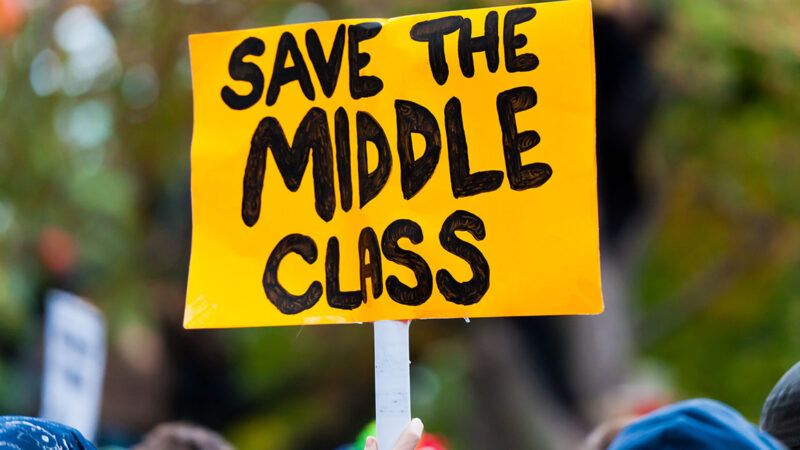Biden's Giveaways Largely Benefit Well-Off Americans
Perhaps not coincidentally, the makeup of the Democratic Party has recently been trending toward high-earning professionals.

During his campaign for the 2020 Democratic presidential nomination, Joe Biden repeatedly insisted that his primary goal as president would be to help the struggling American middle class. "Ordinary middle-class Americans built America," he declared during a June 2019 Democratic primary debate. Under President Donald Trump's policies, he said, "too many people who are in the middle class and who are poor have the bottom fall out."
In defining the "middle class" and the "poor," a good place to start is the median household income. In 2020, the year before Biden became president, the U.S. median was about $67,000, down from about $69,000 the previous year. The poor presumably make less than that, and people in the "middle" class, particularly those who feel the economic bottom falling out beneath them, presumably don't make much more.
As president, Biden's attention has often been elsewhere. Under Biden, Democrats consistently have focused their energies on policies designed to benefit households with stable employment and six-figure annual incomes—not the super rich, but the affluent upper-middle class.
Shortly after taking office, for example, the Biden administration defended its decision to send $1,400 pandemic relief checks to families making up to $150,000 annually. The checks were part of the American Rescue Plan, a $2 trillion package of handouts to Democratic interest groups that Democrats pushed through Congress on partisan votes shortly after taking control of the House, the Senate, and the White House.
"We have to take care of people who are hurting," Biden told a group of House Democrats as the legislation was taking shape in February 2021. Around the same time, Jen Psaki, then the White House press secretary, defended Biden's insistence that the checks go to six-figure earners. Biden, she said during a press conference, "believes a married couple—let's say they're in Scranton, just for the sake of argument; one is working as a nurse, the other as a teacher—making $120,000 a year should get a check."
A two-earner family with stable jobs and good employment prospects making $120,000 a year might be middle class. But such a family in Scranton, Pennsylvania, would have been making nearly twice the 2020 U.S. median and more than five times the local median household income of $23,103. It is hard to believe the sort of household Psaki described was truly "hurting."
Other Biden policies have delivered benefits to families with even higher earnings. The American Rescue Plan included a temporary expansion of the subsidies offered through the Affordable Care Act, the health coverage law also known as Obamacare. That expansion spent $34 billion over two years to boost the law's subsidies for private insurance. The law originally offered subsidies to families making up to 400 percent of the poverty line, or about $106,000 annually in 2021. Biden's legislation changed the formula for determining the income limit for the subsidies. The new cutoffs varied by locality but in some cases would allow families making as much as $350,000 annually to qualify for insurance subsidies worth more than $20,000 a year.
A $350,000 household income would put any family in the top 3 percent of earners in the United States. So much for the struggling middle class and the poor.
Similarly, as Democrats were debating Biden's Build Back Better spending package in 2021, many blue state Democrats, including Senate Majority Leader Chuck Schumer (D–N.Y.), insisted that the deal include an adjustment to the state and local tax deduction. That deduction mainly benefits high earners in blue states who pay high income and property taxes.
This year, Democrats have pushed Biden to forgive vast swaths of student loan debt through executive action. These benefits would flow primarily to upper-income professionals with advanced degrees. While no action had been taken at press time, The Washington Post reported in May that the president was considering an income cap for forgiveness of up to $300,000 annually.
Perhaps not coincidentally, the makeup of the Democratic Party has recently been trending toward high-earning, highly educated professionals. In 2020, Biden won 60 percent of college-educated voters, according to Pew Research Center data, and more-educated counties trended Democratic. These high-earning degree holders may be ordinary Democrats, but they are not "ordinary middle-class Americans."
This article originally appeared in print under the headline "Biden Comforts the Comfortable."


Show Comments (215)